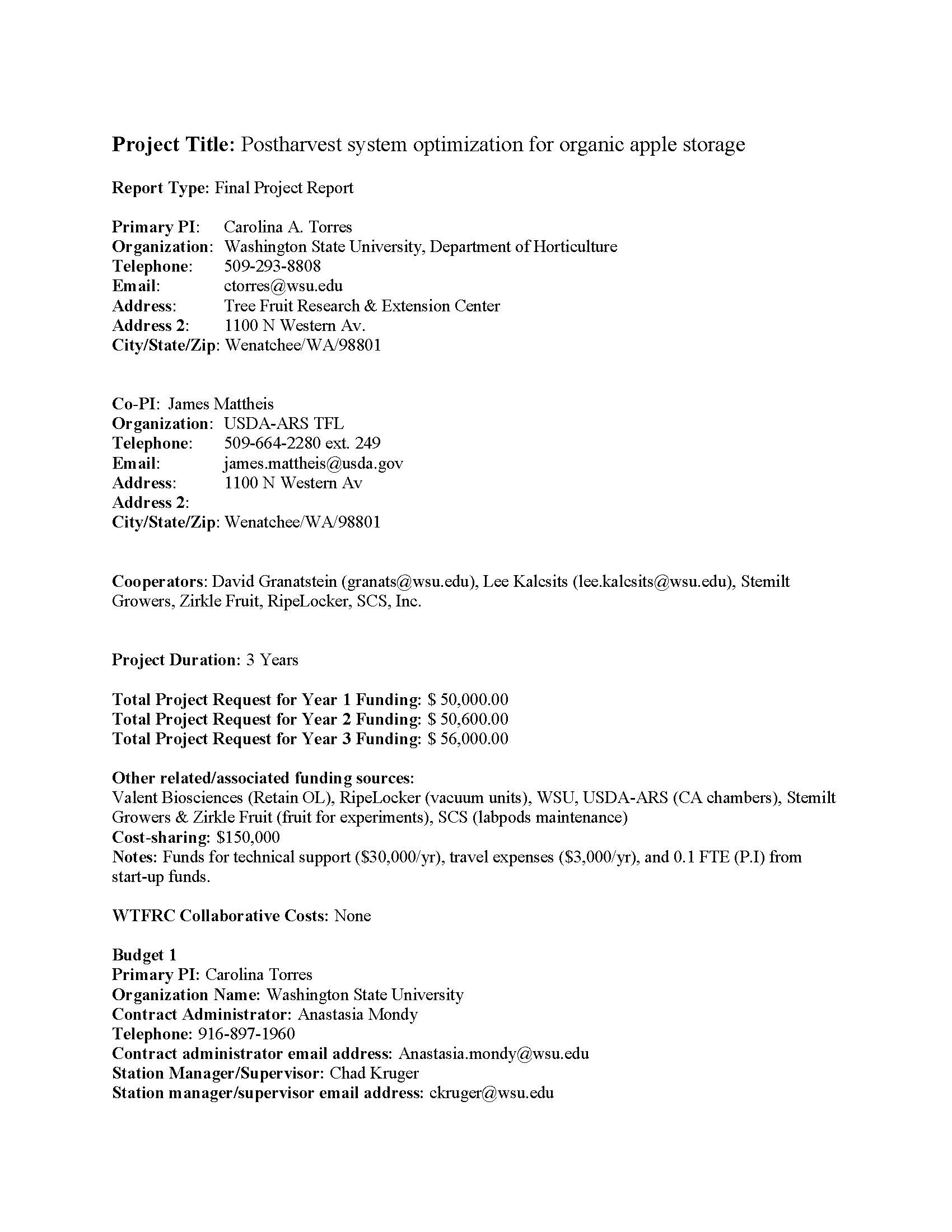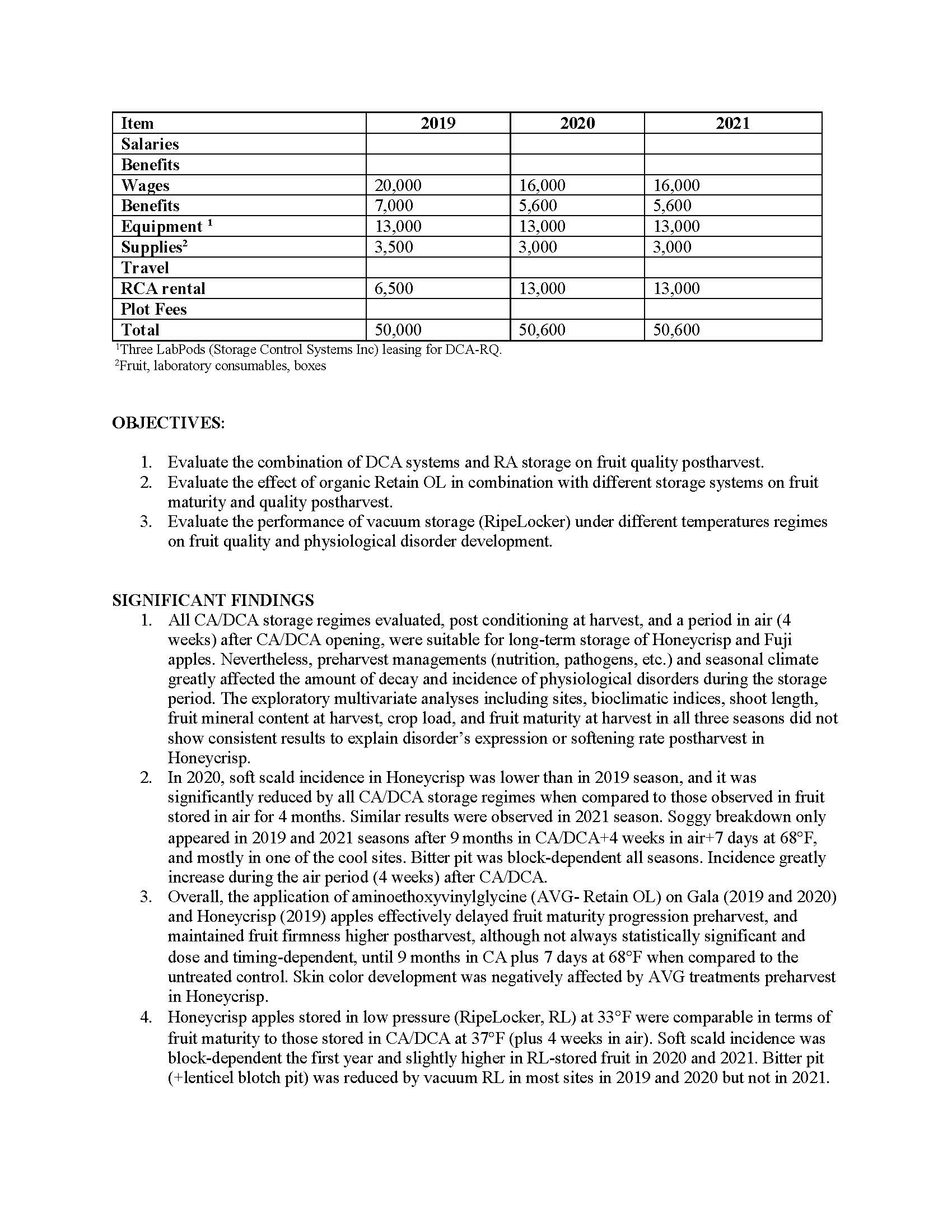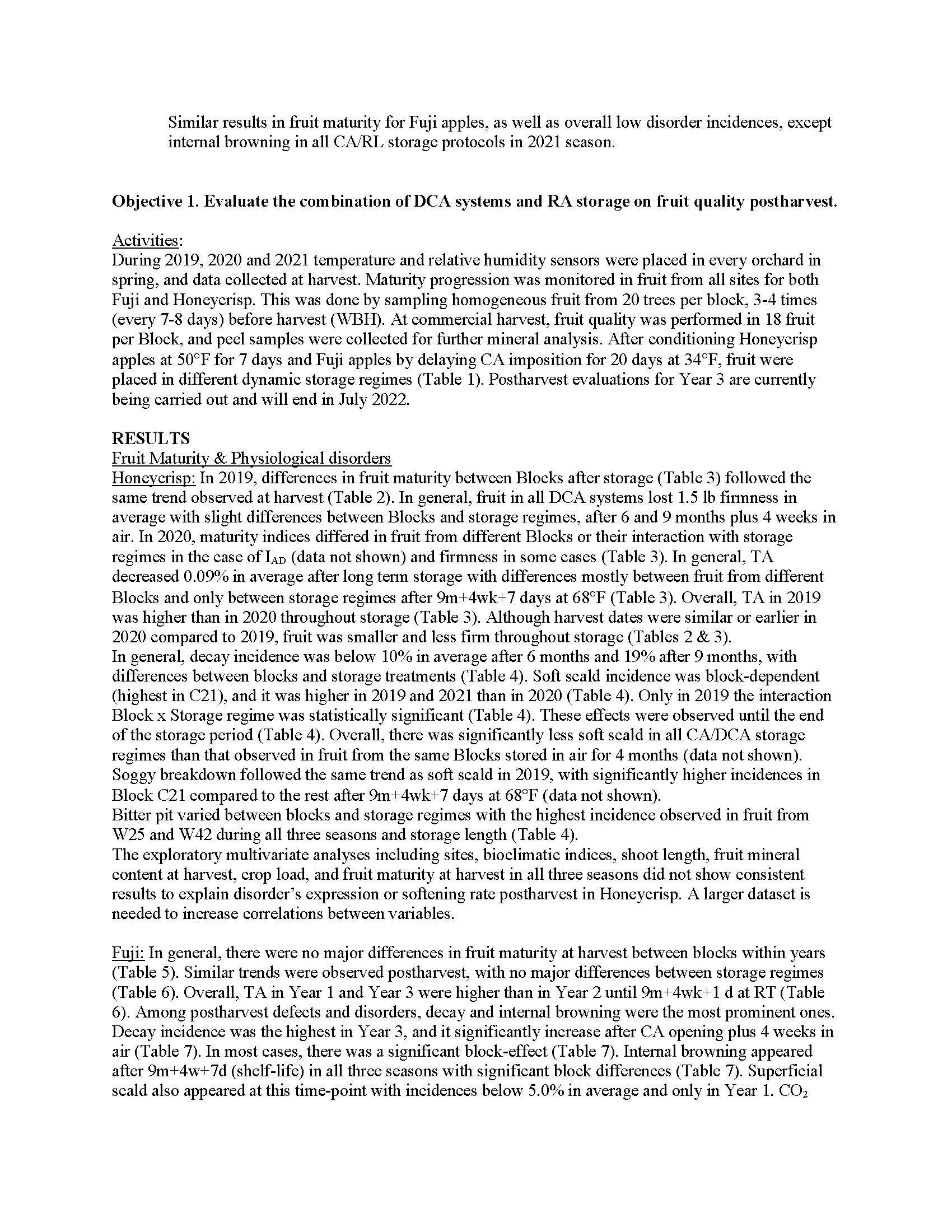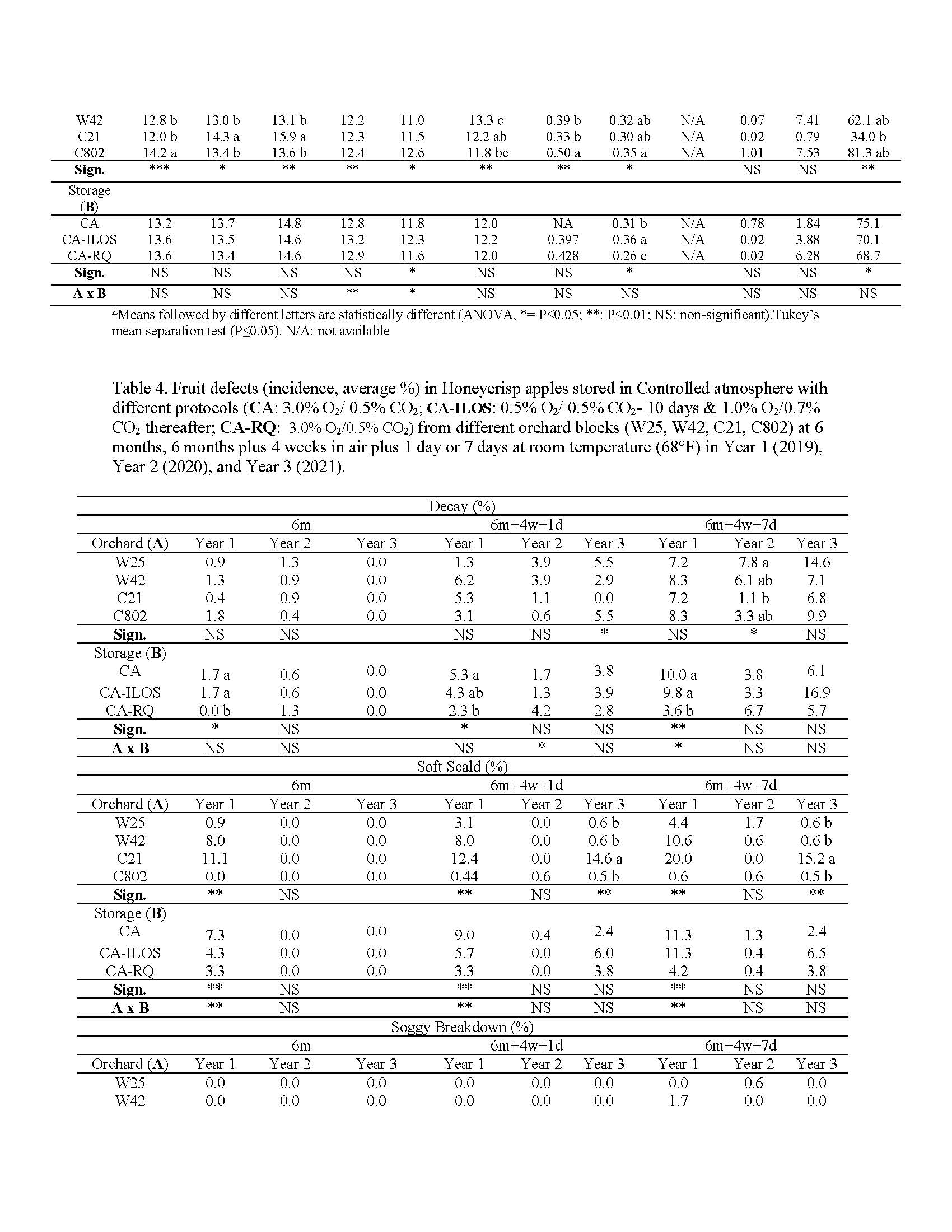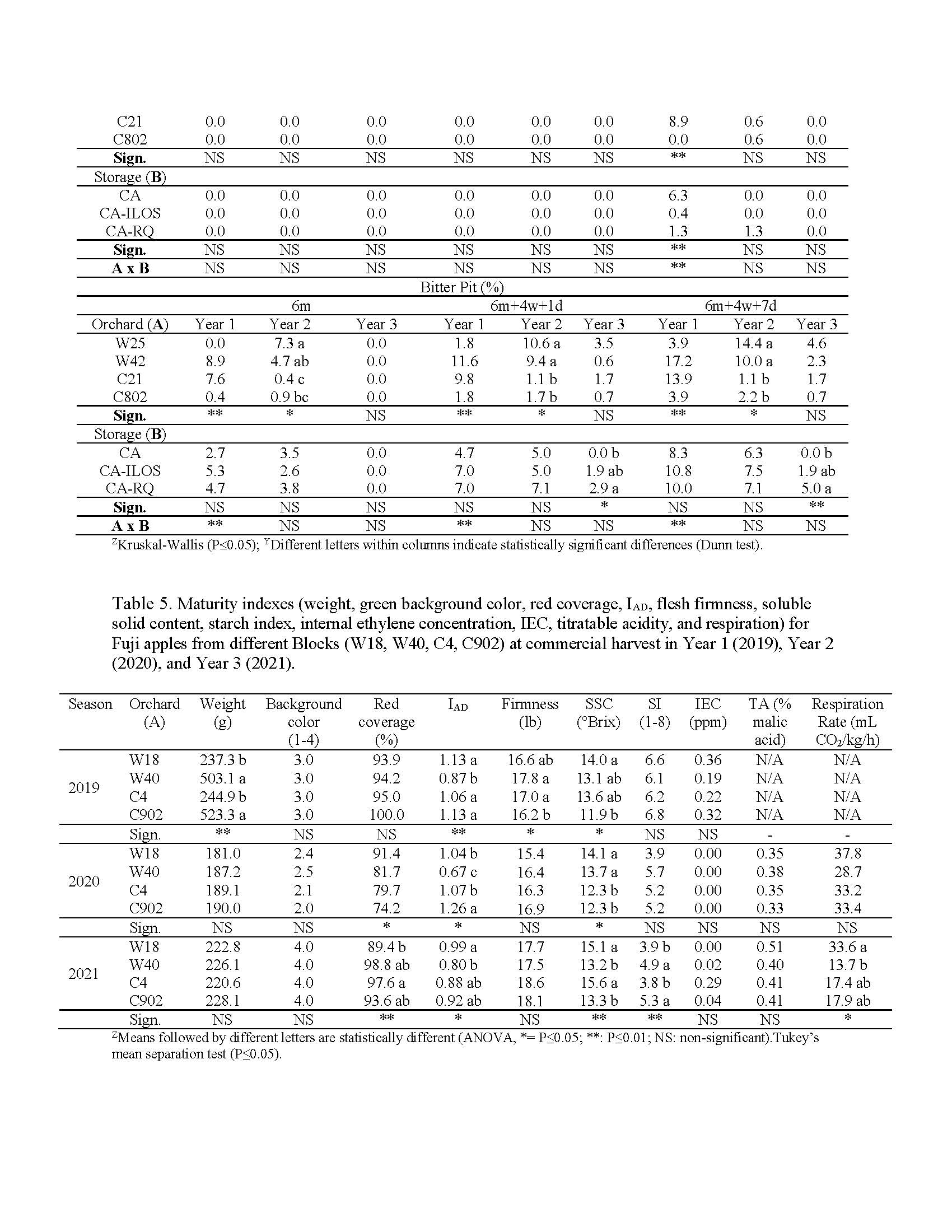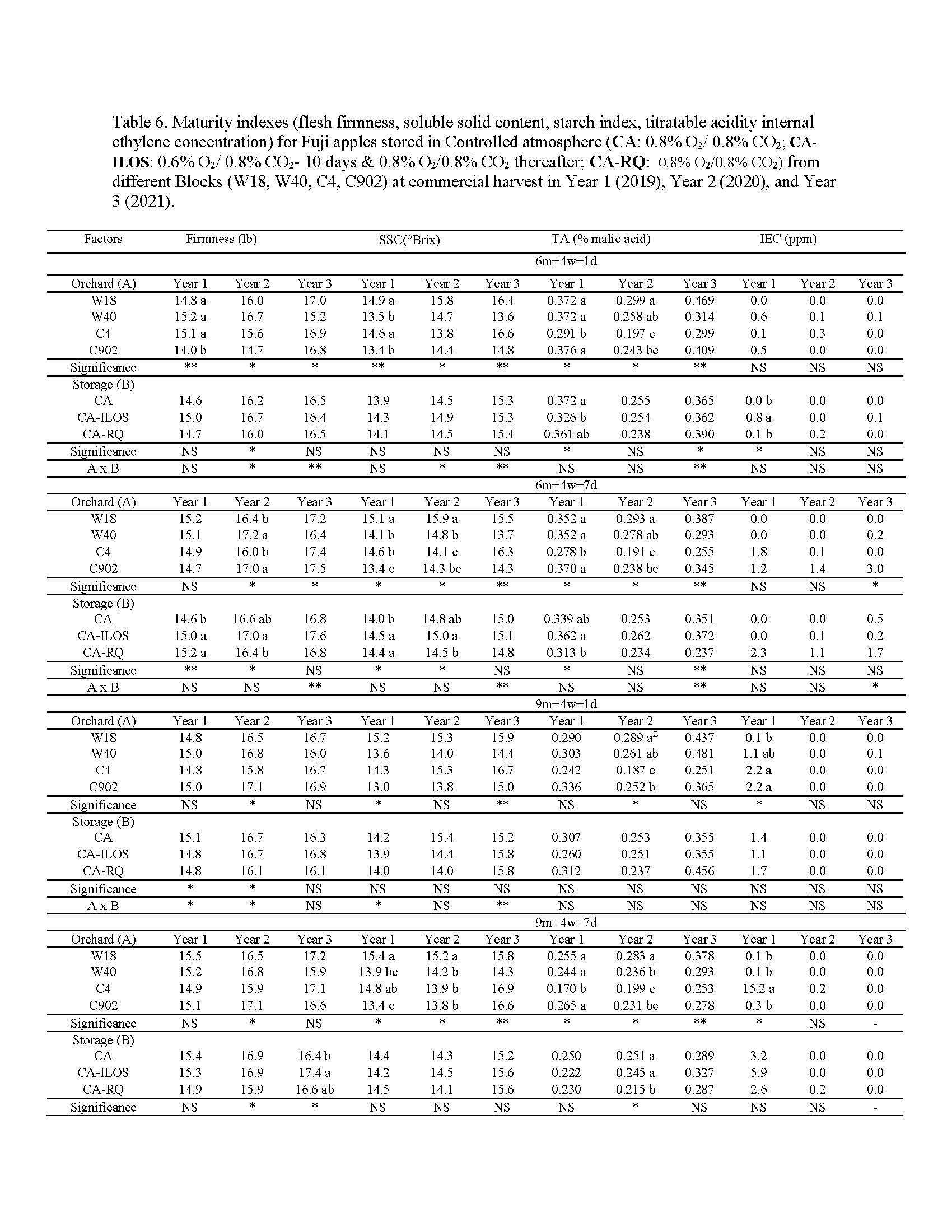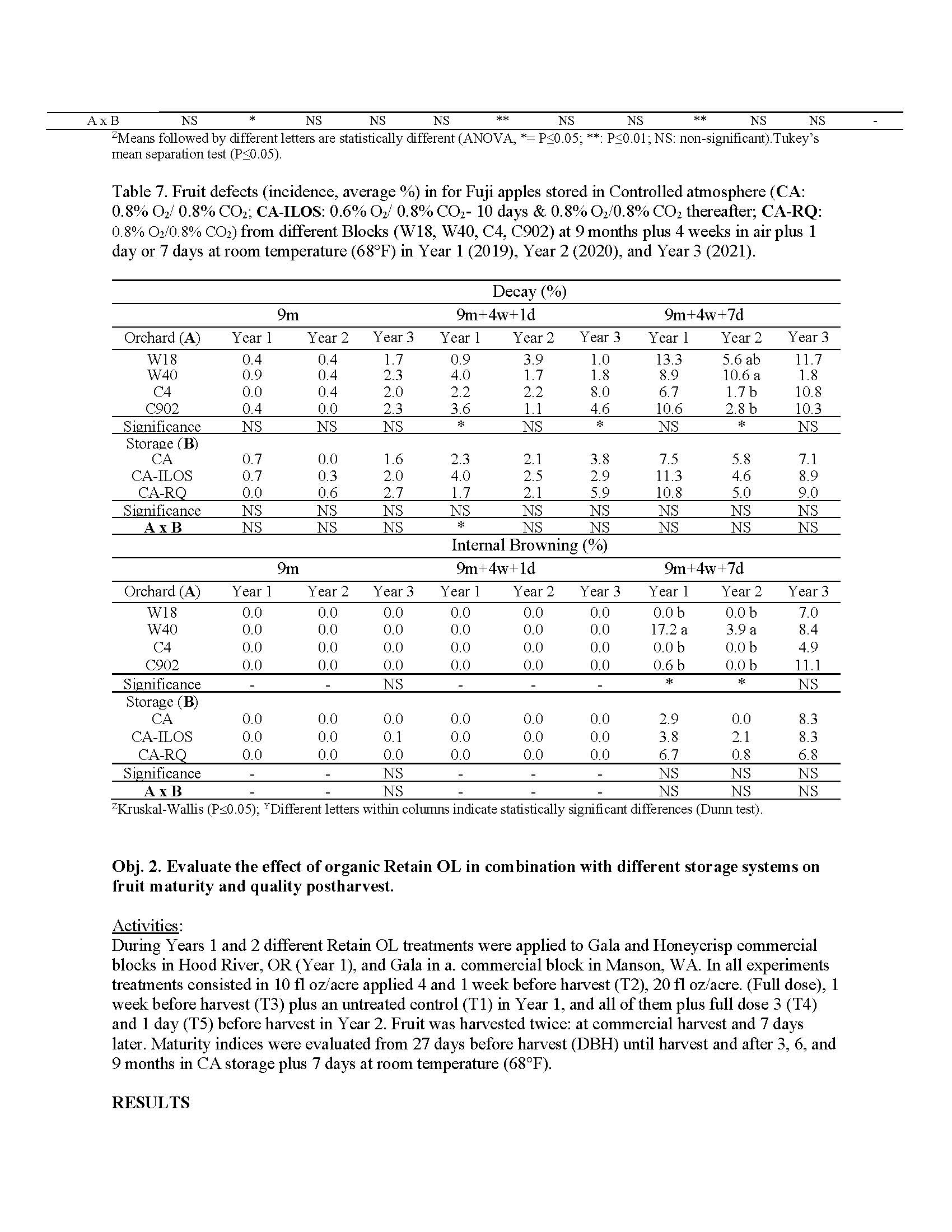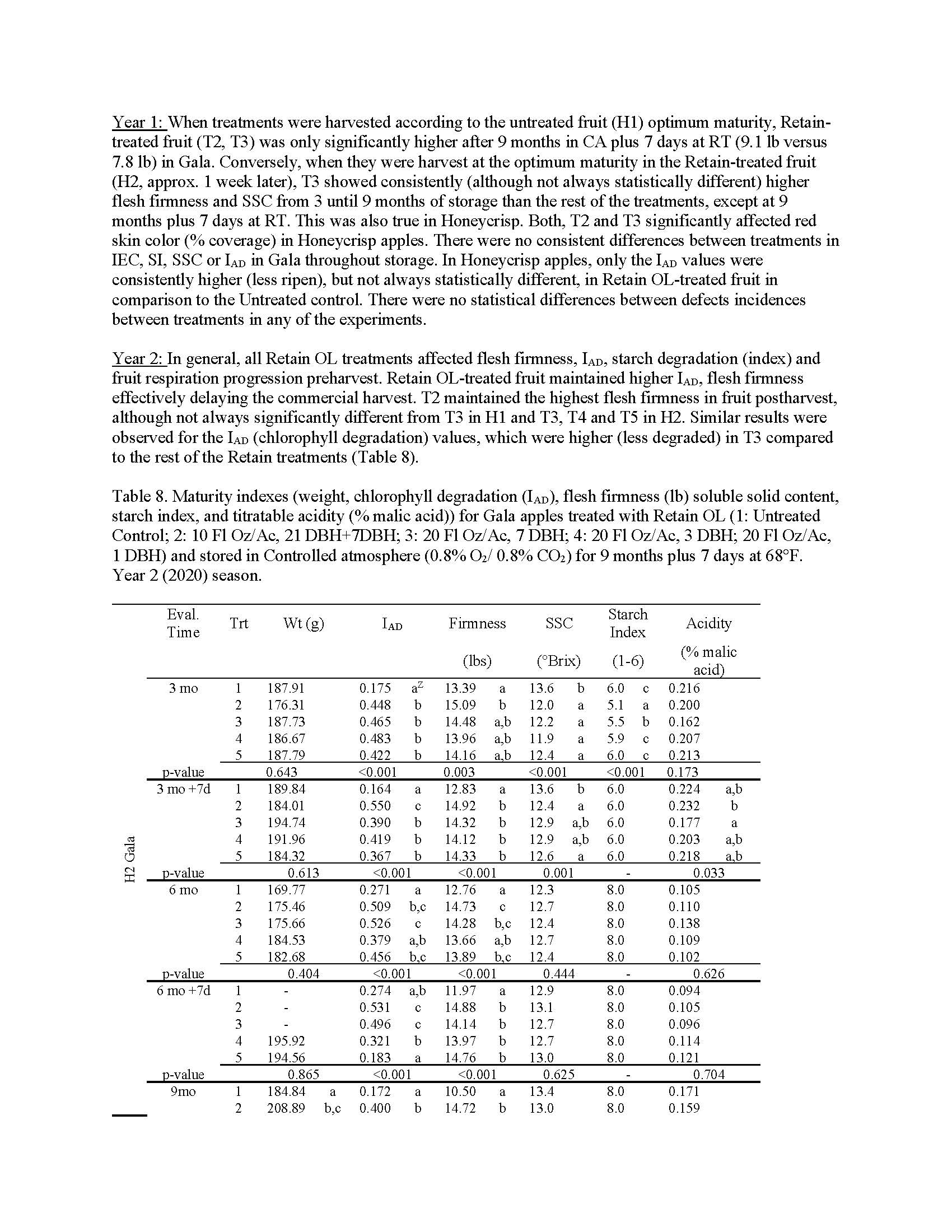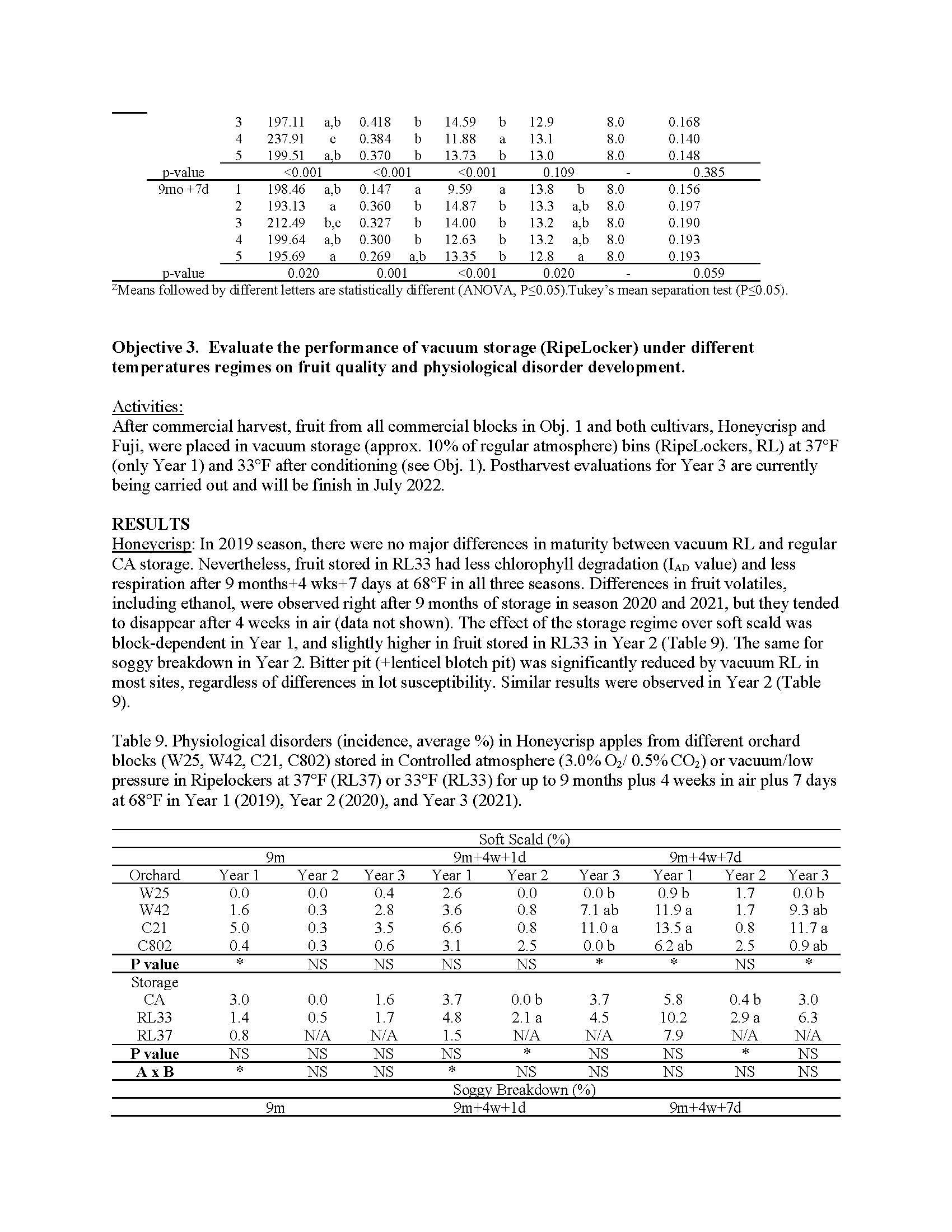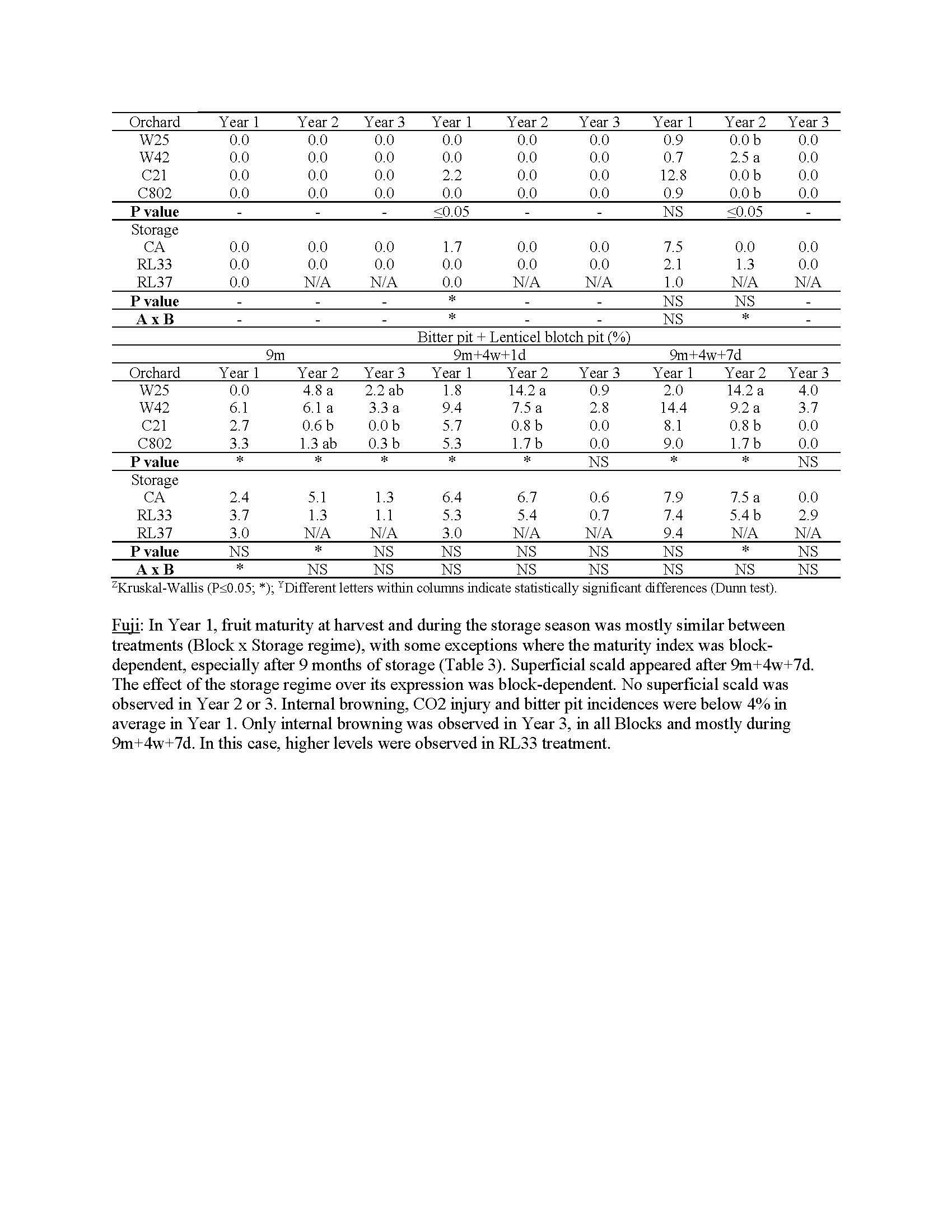Postharvest system optimization for organic apple storage
Author: Carolina A. Torres
Published: 2023
Summary: In order to evaluate different postharvest technologies for organic apples, ‘Honeycrisp’ and ‘Fuji’ apples from four different orchards were picked at commercial harvest during 3 consecutive seasons (2019-2021) and placed into different controlled atmosphere regimes. For ‘Honeycrisp’ these were: 1. CA (3% O2/0.5% CO2); 2. CA-RQ (3% O2/0.5% CO2), and 3. CA-ILOS (Initial low oxygen stress; 0.5% O2/0.5% CO2 -10 days, 1.0% O2/0.7% CO2 thereafter) after conditioning fruit for 7 days at 50°F. For ‘Fuji’ apples CA regimes were: CA: 0.8% O2/ 0.8% CO2; CA-ILOS: 0.6% O2/ 0.8% CO2- 10 days, and 0.8% O2/0.8% CO2 thereafter; CA-RQ: 0.8% O2/0.8% CO2 with pre-conditioning of 4 weeks in air before CA imposition. Fruit maturity and physiological disorders development were assessed after six and nine months of storage plus four weeks in air (37°F or 34°C) and 7 days at 65°F (‘shelf-life’). Overall, all CA/DCA storage regimes evaluated were suitable for long-term storage of organic Honeycrisp and Fuji apples. Nevertheless, preharvest managements (nutrition, pathogens, etc.) and seasonal climate greatly affected the amount of decay and physiological disorders development during the storage period. In 2020, soft scald incidence in Honeycrisp was lower than in 2019 season, and it was significantly reduced by all CA/DCA storage regimes when compared to those observed in fruit stored in air for 4 months. Similar results were observed in 2021 season. Soggy breakdown only appeared in 2019 and 2021 seasons after 9 months in CA/DCA+4 weeks in air+7 days at 68F, and mostly in one of the cool sites. Bitter pit was block-dependent all seasons. Incidence greatly increase during the air period (4 weeks) after CA/DCA. In general, Fuji had very low level of defects and disorders with the most prominent ones being decay and internal browning, both of which appeared during air storage after CA/DCA and after 7 days at 68F, respectively. Overall, the application of aminoethoxyvinylglycine (AVG- Retain OL) on Gala (2019 and 2020) and Honeycrisp (2019) apples effectively delayed fruit maturity progression preharvest, and maintained fruit firmness higher postharvest, although not always statistically significant and dose and timing-dependent, until 9 months in CA plus 7 days at 68F when compared to the untreated control. Skin color development was negatively affected by AVG treatments preharvest in Honeycrisp. Honeycrisp apples stored in low pressure (RipeLocker, RL) at 33F were comparable in terms of fruit maturity to those stored in CA/DCA at 37F (plus 4 weeks in air). Soft scald incidence was block-dependent the first year and slightly higher in RL-stored fruit in 2020 and 2021. Bitter pit (+lenticel blotch pit) was reduced by vacuum RL in most sites in 2019 and 2020 but not in 2021.
Keywords:

